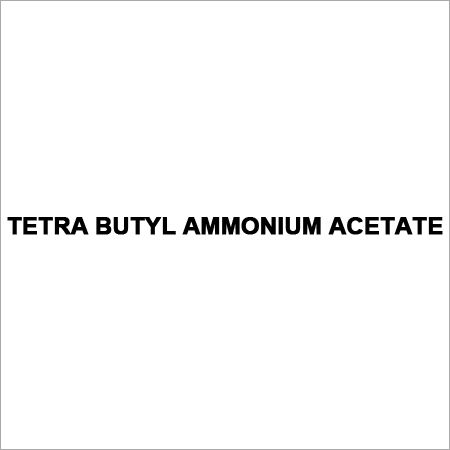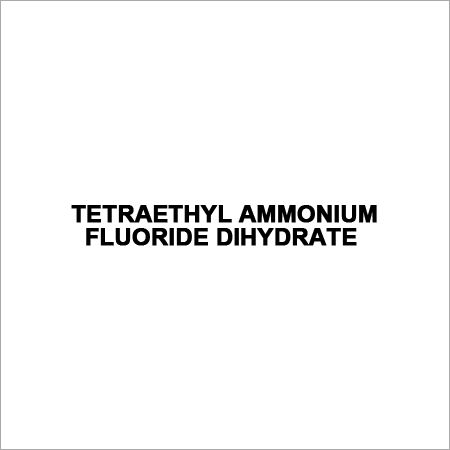
Tetra Butyl Ammonium Acetate
Product Details:
Product Description
TBAA can be utilised as a biocide, a corrosion inhibitor, and an additive in cement in addition to its use in organic synthesis applications.
Although TBAA is typically regarded as a secure and reliable catalyst and additive, it is crucial to handle it carefully because it can be harmful if consumed or inhaled in high amounts. When working with TBAA, proper ventilation, protective gear, and safe handling techniques should always be employed.
FAQ
1. Tetra butyl ammonium acetate is what?
Ans - A phase transfer catalyst used in organic synthesis is an organic molecule called tetra butyl ammonium acetate.
2. What uses does tetra butyl ammonium acetate have?
Ans - Tetra butyl ammonium acetate is employed in the manufacture of pharmaceuticals, fine chemicals, and agrochemicals, among other things. Additionally, it is employed in the manufacturing of dyes, pigments, and polymers.
3. What steps go into making tetra butyl ammonium acetate?
Ans - Tetra butyl ammonium hydroxide and acetic acid react to produce tetra butyl ammonium acetate.
4. How does tetra butyl ammonium acetate affect the environment?
Ans - Tetra butyl ammonium acetate is typically regarded as a chemical with little potential to harm the environment.
5. Tetra butyl ammonium acetate is poisonous, right?
Ans - Tetra butyl ammonium acetate is not poisonous, but it should still be handled carefully. In high concentrations, it can irritate the skin and eyes.

 English
English Spanish
Spanish French
French German
German Italian
Italian Chinese (Simplified)
Chinese (Simplified) Japanese
Japanese Korean
Korean Arabic
Arabic Portuguese
Portuguese






